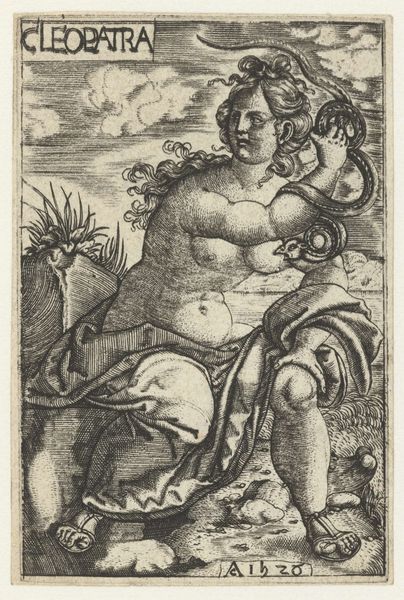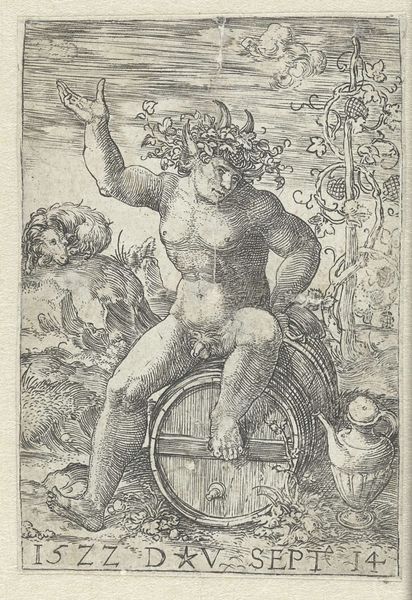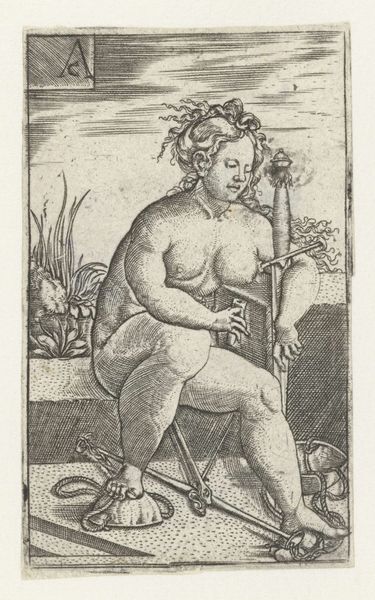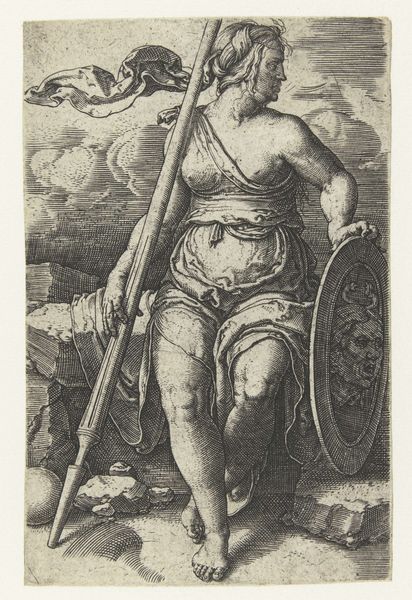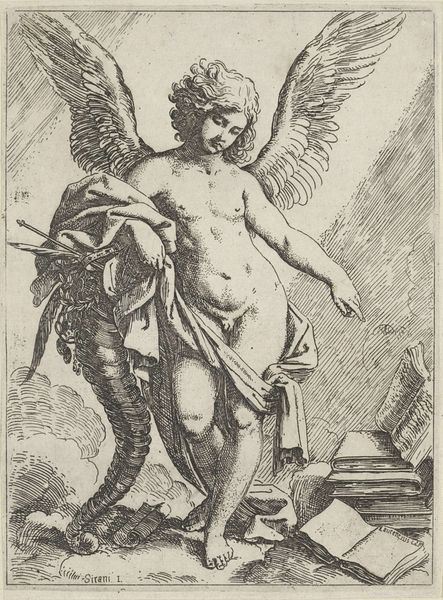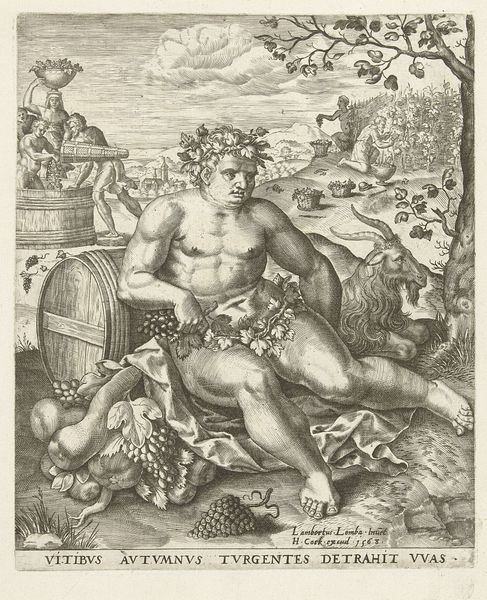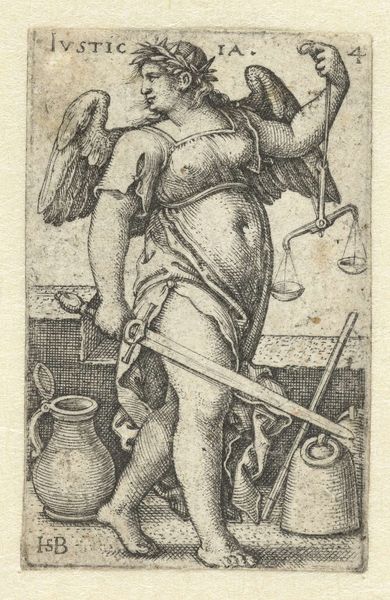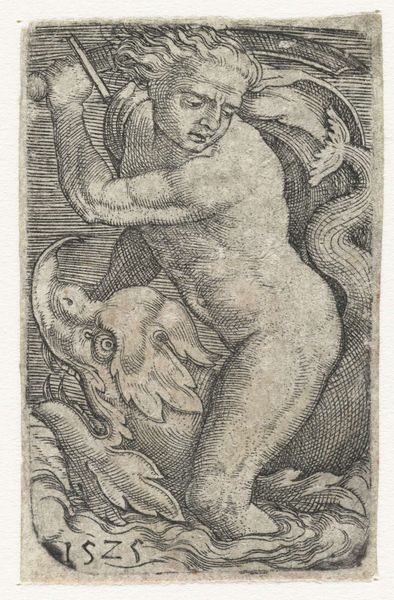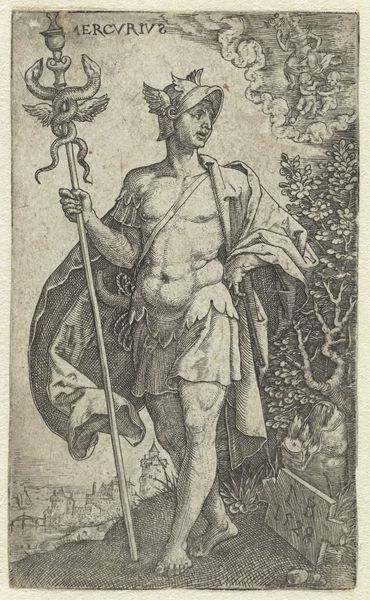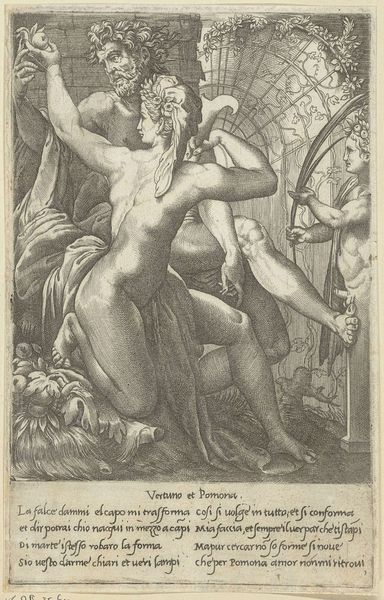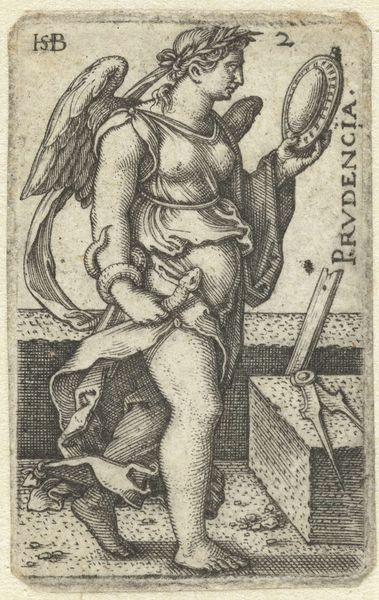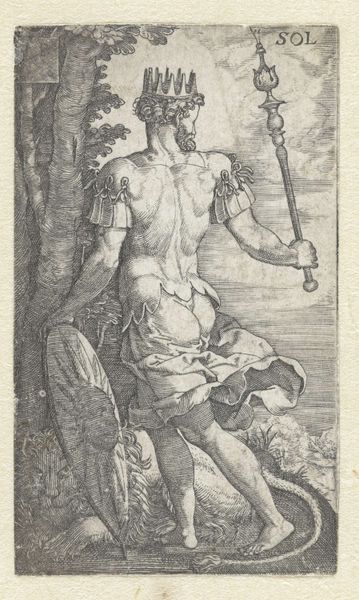
engraving
#
allegory
#
11_renaissance
#
nude
#
engraving
Dimensions: height 73 mm, width 48 mm
Copyright: Rijks Museum: Open Domain
Curator: I find this image so striking. "Venus Sailing in a Shell," possibly created around 1524 by Dirck Vellert. The detail captured in the engraving, especially considering the process, is astounding. Editor: It has an unexpected power. Venus is not the delicate figure one might anticipate. Her physique reads more masculine, she looks almost Amazonian. The muscular arms! What statement do you think the artist was trying to make with this... unconventional depiction of the goddess of love? Curator: Well, that interpretation certainly leads to fascinating places! Let's examine how an engraving like this would have circulated at the time. Consider the labor invested in creating the plate. How would this affordable and widely reproducible image have been perceived in 16th-century Europe? Were viewers admiring of its detailed artistry or drawn more to the message it conveyed? What kind of workshop enabled an artist to craft something with this density? Editor: It makes one wonder how closely this image ties in with broader cultural shifts during the Renaissance—the expanding merchant class and printing industry changing the ways stories and knowledge were shared with the masses. Images of classical subjects, like this engraving of Venus, were often used by powerful members of society to signal their familiarity with the values and traditions of the classical era. The proliferation of this imagery via mass media surely had some kind of political and social impact on art at this time, as it began being consumed more and more publicly. Curator: Exactly, and it pushes us to reflect on access and consumption. Think about the economics of art production at that moment, and how Vellert's access to materials and networks affected the final design, subject matter, and cultural reach. Also, given Venus' traditional associations with desire and earthly pleasures, what does her muscular physique and almost martial pose imply? Editor: I do think it underscores a degree of authority and physical control typically associated with male power. And it's fascinating to see that rendered on a female mythological figure at this early point in history. Curator: I agree! It prompts some crucial questions. Whose Venus is this, ultimately? What meanings could it generate within its specific contexts of production, distribution, and reception? And how do our own interpretations today shape—and perhaps also distort—these meanings further? Editor: It’s thought-provoking to examine images we think we already understand so thoroughly from so many angles and from our diverse positions. The dialogue provides more dimension to that.
Comments
No comments
Be the first to comment and join the conversation on the ultimate creative platform.
